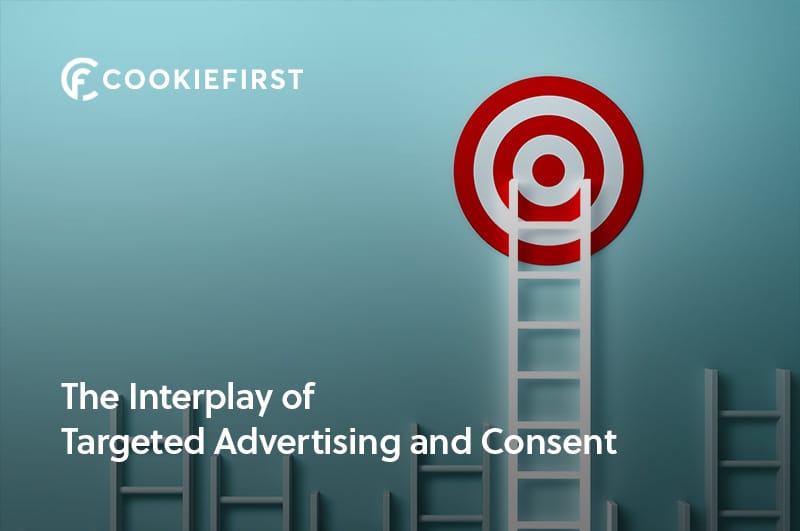The Interplay of Targeted Advertising and Consent: A Modern Advertising Dilemma
In the digital age, targeted advertising has become a cornerstone of online marketing strategies. Businesses use granular data to direct specific advertisements to individuals, based on their behaviors, interests, and demographics. While targeted advertising has proven effective for businesses, it has also spurred debates around user privacy and consent. (for example cookie consent) In this article, we’ll explore the intricate relationship between targeted advertising and the essential element of consent.
 The Interplay of Targeted Advertising and Consent: A Modern Advertising Dilemma
The Interplay of Targeted Advertising and Consent: A Modern Advertising Dilemma
1. What is Targeted Advertising?
At its core, targeted advertising refers to the strategy of delivering advertisements to specific individuals or segments, based on collected data. This data can include:
- Behavioral Data: Websites visited, products searched for, articles read.
- Demographic Data: Age, gender, location, profession.
- Psychographic Data: Interests, values, attitudes.
Using algorithms and detailed analytics, advertisers can ensure their content reaches the most relevant audience, increasing the likelihood of conversions.
2. The Role of Consent in Targeted Advertising
Consent plays a critical role in data collection for targeted advertising. It’s the individual’s way of granting permission for their data to be used. (for example through tracking cookies) In regions like the European Union, under the General Data Protection Regulation (GDPR), obtaining explicit and informed consent is a legal requirement before collecting or processing personal data.
The CookieFirst Consent Management Platform offers the functionalities to obtain proper consent for using targeted advertising in your web presence.
3. Why is Consent So Crucial?
- Trust Building: Consent builds trust between users and companies. By seeking permission and being transparent about data usage, businesses show respect for user privacy.
- Regulatory Compliance: Non-compliance with data protection regulations can lead to hefty fines and legal consequences. Consent ensures businesses remain on the right side of the law.
- Enhanced User Experience: When users grant consent, they’re more likely to engage positively with targeted ads since they have some control over their data.
Cookie Consent Manager | Take a 2 week free trial
Take a 2 week free trial for our paid plans or create a free account …
4. Challenges with Obtaining Genuine Consent
While the importance of consent is clear, obtaining genuine, informed consent isn’t always straightforward:
- Pre-ticked Boxes: Some websites use pre-ticked consent boxes, which can be misleading. Genuine consent means the user should actively opt-in, not passively accept.
- Cookie Walls: Some websites block content unless users accept all cookies, which can be seen as coercive and not in line with the spirit of informed consent.
- Ambiguous Language: Using complicated jargon can confuse users, making it hard for them to understand what they’re consenting to.
5. Best Practices for Obtaining Consent in Targeted Advertising
- Clear Language: Use plain, straightforward language when asking for consent. Users should easily understand what they’re agreeing to.
- Active Opt-In: Ensure that consent requires active affirmation from the user. Avoid pre-ticked boxes or default settings.
- Granular Consent: Allow users to choose the types of data they’re comfortable sharing and the purposes they permit it to be used for.
- Easy Withdrawal: Consent isn’t a one-time agreement. Users should be able to withdraw their consent easily whenever they wish.
- Transparency: Regularly update and communicate privacy policies, ensuring users are aware of their data rights.
Do you want to know how to configure your cookie banner respecting these best practices? Read our article on the NOYB Cookie Banner Guidelines.
6. Beyond Consent: The Future of Targeted Advertising
With increased scrutiny on data privacy and the push for a more ethical digital landscape, the future of targeted advertising might see a shift:
- First-party Data Emphasis: Businesses may lean more towards data directly provided by users, leading to a more transparent data exchange.
- Contextual Advertising: Instead of relying heavily on personal data, advertisers might focus on the context of webpages to determine ad placements.
- Privacy-enhancing Technologies: The tech industry is already innovating with solutions that allow for targeted advertising without compromising user privacy.
In Conclusion
The symbiosis of targeted advertising and consent is undeniably complex. While targeted ads offer businesses an effective means to reach potential customers, it’s imperative that user privacy isn’t compromised in the process. By championing genuine consent, businesses can navigate this challenging terrain, ensuring they deliver relevant ads while upholding the highest standards of data protection and user trust.





